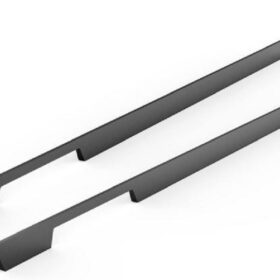FAQs About Aluminum Profiles for Cabinets Answered
Aluminum profiles for cabinets have gained immense popularity in recent years due to their durability, versatility, and sleek aesthetic appeal. To cater to the growing queries surrounding this cabinetry solution, this article presents a comprehensive FAQ guide, providing answers to common concerns and offering valuable insights.
Features and Benefits of Aluminum Profiles for Cabinets
Aluminum profiles feature several notable advantages over traditional cabinet materials. They are exceptionally durable and withstand warping, bowing, or cracking, ensuring longevity and stability. These profiles are also lightweight, making them easy to handle and install. Moreover, aluminum’s inherent resistance to moisture and corrosion makes it ideal for use in kitchens, bathrooms, and other humid environments.
Types and Styles of Aluminum Profiles for Cabinets
Aluminum profiles for cabinets come in various types and styles to accommodate diverse design preferences. Extruded profiles, which are formed by pressing aluminum through a die, provide precise shapes and sharp edges. Anodized profiles undergo an electrochemical process that creates a protective oxide layer, enhancing durability and offering a wide range of colors and finishes. Additionally, thermally broken profiles incorporate an insulating barrier to minimize heat transfer, ensuring energy efficiency.
Installation of Aluminum Profiles for Cabinets
Installing aluminum profiles for cabinets involves several steps:
–
Measuring and Cutting:
Determine the required lengths and cut the profiles accordingly using a miter saw or a circular saw equipped with a carbide blade.
–
Assembling the Frame:
Join the cut profiles using connectors, ensuring a secure and square assembly.
–
Installing the Doors and Drawers:
Fit the doors and drawers into the frame and secure them with appropriate hinges or slides.
Cost and Maintenance of Aluminum Profiles for Cabinets
While aluminum profiles for cabinets are generally more expensive than traditional materials, their durability and low maintenance requirements make them a cost-effective investment. To maintain their appearance and functionality, occasional cleaning with mild detergents and a soft cloth is sufficient. Avoiding abrasive cleaners and abrasive sponges is crucial to prevent damage to the surface.
Sustainability and Environmental Considerations
Aluminum is a highly recyclable material, making it an eco-friendly choice for cabinet construction. Its durability also contributes to sustainability by reducing the need for frequent replacements. Furthermore, the production of aluminum profiles involves fewer emissions compared to other materials, minimizing environmental impact.
Conclusion
FAQs About Aluminum Profiles for Cabinets Answered provides a comprehensive overview of this modern and versatile cabinetry solution. By understanding the features, types, installation, cost, maintenance, and sustainability aspects, homeowners and professionals can make informed decisions when considering aluminum profiles for their cabinetry needs. Embrace the sleek aesthetics, durability, and practicality of aluminum profiles to enhance the functionality and style of your interiors.
-
2024-11-29Top Trends in Modern Kitchen Cabinet Pulls for 2024
-
2024-11-28The Ultimate Guide to Modern Kitchen Cabinet Pulls- Materials, Styles, and Tips
-
2024-11-27Elevate Your Kitchen Design with These Must-Have Modern Cabinet Pulls
-
2024-11-26Sleek and Stylish- The Best Modern Kitchen Cabinet Pulls for a Contemporary Look










